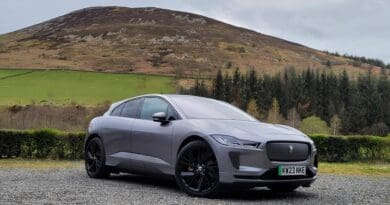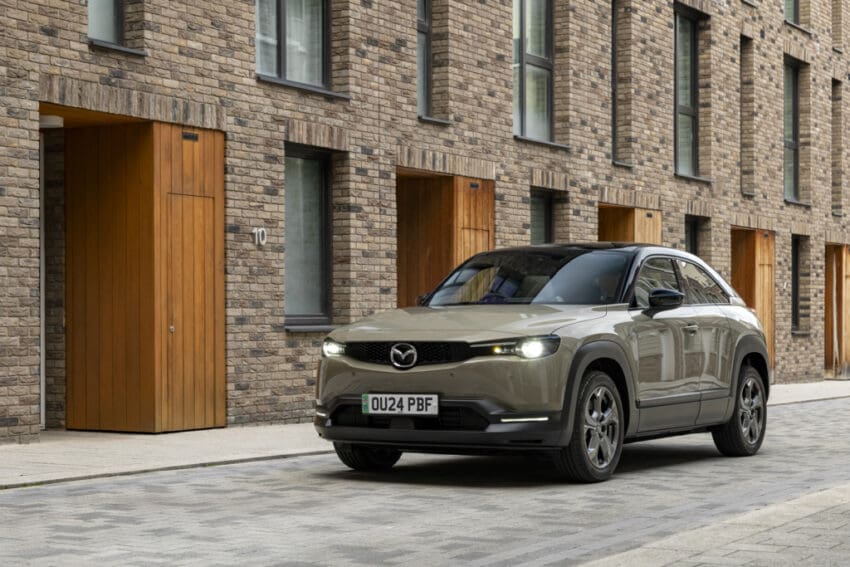
Mazda MX-30 review: Does size matter?
Does Mazda’s less-is-more approach to electric cars make sense in the face of tough competition?
Mazda has made it clear that it isn’t convinced by Europe’s rush to electrification. It’s still investing in combustion engine development, exploring e-fuels and isn’t planning a full-scale launch of BEVs until 2028.
And the MX-30 feels like an electric car from a company that still isn’t fully backing electric cars.
Despite Mazda’s engineering brilliance and history of producing excellent cars, the MX-30 feels like the automotive equivalent of those UberEats adverts starring Robert de Niro – a half-hearted contractual obligation from someone we know is capable of far, far better.
Design, interior and technology
On the surface, things start well. Mazda’s designers bash out great looking car after great looking car and the MX-30 is another success.
The slimline grille gives the distinctive Mazda ‘face’ a subtle tweak and there’s a simple, fluid look to the panels. The diving roofline and square wheel arches create a handsome profile but the most eye-catching feature is the small rear-hinged rear doors that almost vanish when closed.
Inspired by the RX-8, these open wide and allow easier access to the back seats, as well as creating a talking point. Unfortunately you can’t open them without opening the front doors and if there’s someone in the front seat, you’ll garotte them with their seatbelt. They also cause major visibility problems, with tiny windows and thick black surrounds that make it almost impossible for the driver to see anything over their shoulder.
The tiny windows add to a claustrophobic feeling in the rear seats, which isn’t helped by fairly meagre legroom. The MX-30 is a compact crossover, so like most of its rivals, small children will be comfortable enough but adults won’t want to spend much time in the back.
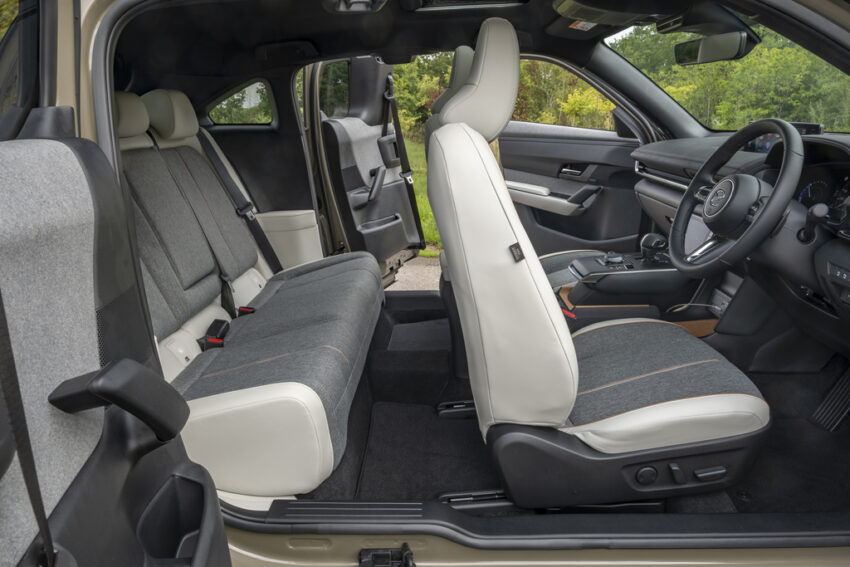
Things are better in the front seats, where there’s reasonable space for the class and Mazda’s smart material choices and build quality shine through. Light-coloured vegan-friendly fabrics line most of the surfaces and the leather in higher-spec cars is synthetic. Cork inlays are a sustainable and unique finish, and a nod to Mazda’s history, while the door tops are wrapped in a fabric made from recycled plastic bottles.
Ahead of the driver is a simple, easy-to-read instrument display that blends digital and analogue dials to good effect, and all versions of the MX-30 feature a head-up display for key driving information. Media and navigation is taken care of via an 8.8-inch screen controlled by a rotary dial mounted in the centre console and once you get used to Mazda’s menu system it’s fairly simple and quick to operate.
Below that in the floating centre console is another seven-inch screen for the climate controls, flanked by duplicate physical controls. This feels rather unnecessary given its limited functionality, and simple physical dials like in the CX-30 would have a neater solution and freed up more storage space. On the subject of storage, the boot is 366 litres – decent enough for the class and big enough for a week’s shopping.
Battery, motor and performance
The Mazda MX-30 uses a 35.5kWh battery which offers an official range of 124 miles.
In this day and age that sounds tiny but Mazda argues that the average journey by a Mazda owner is 26 miles, meaning you’ll get most of a working week out of a single charge. It’s what Mazda calls ‘right sizing’ – giving customers what they’ll actually use rather than charging more money for unnecessary capacity.
There’s a validity to that argument, especially if you view the MX-30 as a second, lesser-used car. A smaller battery is lighter, which means the car should be more efficient and charging doesn’t take as long, although DC charging is limited to 50kW.
However a Vauxhall Corsa, MG4 or Fiat 500e will offer at least 200 miles of range for similar money, plus faster charging, and for some drivers that extra flexibility will take precedence over a nicer interior. And in my experience, the Mazda’s efficiency isn’t noticeably better despite the lighter battery.
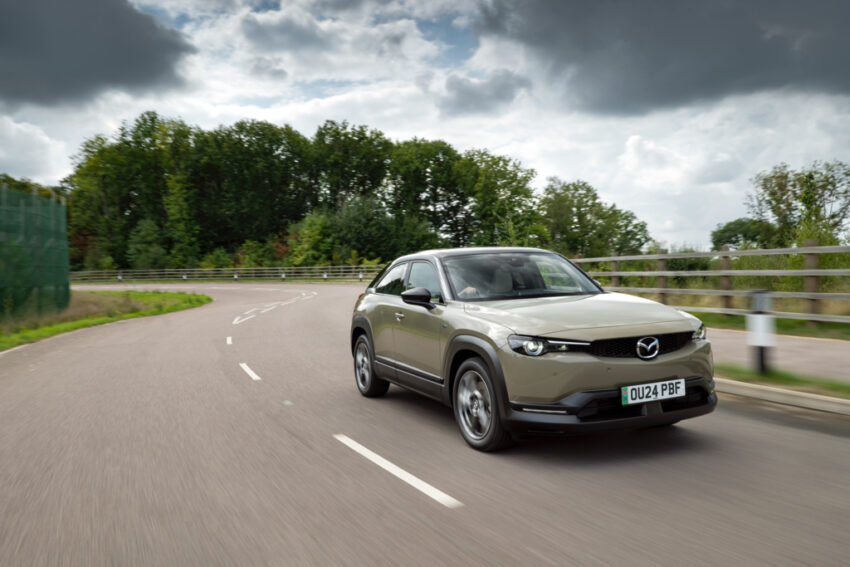
Those rival models also all offer a little more get-up-and-go than the Mazda. Its 143bhp motor brings a 0-62mph time of almost 10 seconds and there’s a dullness to the throttle that robs the Mazda of the zippy response usually offered by EVs.
On the open road it rides well but doesn’t have the sharp, light handling of something like a Mazda 3 or CX-30, rendering it a relatively dull car to drive.
There is an alternative in the shape of the MX-30 R-EV. This plug-in hybrid model uses an even smaller 17.8kWh battery but also features a 830cc rotary motor. The engine never drives the wheels but acts as a generator to keep the battery topped up to power its punchier 168bhp electric motor.
In many ways this feels like the better option for the MX-30. It gives around 30 real-world miles of EV range – enough for an average Mazda driver’s day and can then be recharged at home in one and a half hours or driven for another 350 miles before the rotary motor burns through all its fuel. There’s also 36kW DC charging – unusually quick for a PHEV.
It also does an impressive job of balancing its battery and engine usage and offers a more convincing EV-like drive than many plug-in hybrids.
Price and specification
A few days after I drove the MX-30, Mazda announced it was slashing £3,000 off the price and offering buyers a £6,000 deposit contribution, 0% APR and a free home charger, bringing monthly costs down to as little as £199. Cynics would say this is a sign of desperation in the face of the ZEV mandate, Mazda would tell you it’s a simple matter of repositioning the car now that earlier supply shortages have been addressed.
It certainly helps a little in terms of making a case for the car. Entry level Premium-Line cars are now £27,995 and the top-spec Makota I drove drops from £35,395 to £32,395. Every car gets 18-inch alloys, LED lights, adaptive cruise control, a reversing camera and smartphone mirroring. Makato adds heated seats and steering wheel, adaptive headlights, keyless entry and a Bose sound system, plus additional driver assist systems.
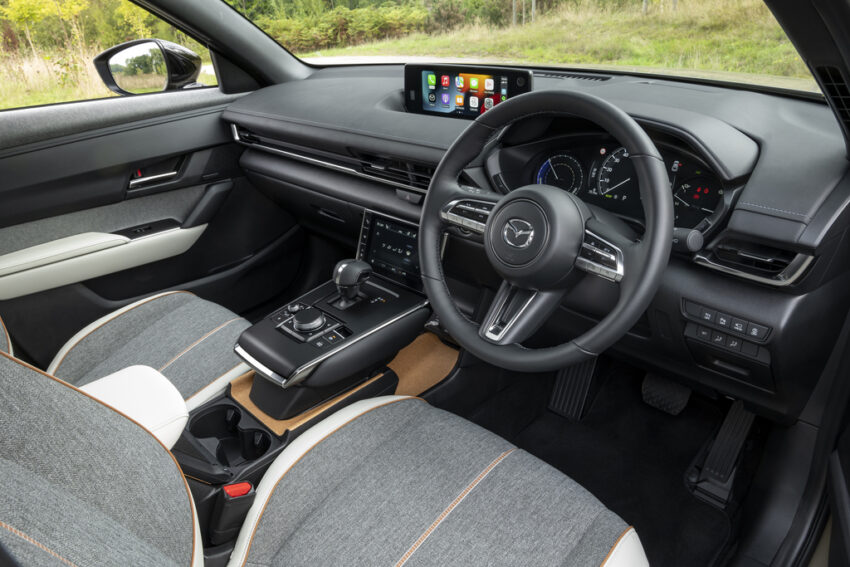
“From less than £28k” certainly sounds a lot more attractive than “more than £30k”. The reduction also creates a bit of a gap to basic versions of cars like the Volvo EX30, Hyundai Kona or Jeep Avenger, which offer more room, range and power for £34,000 to £35,000.
The MX-30 definitely has a more premium feel than anything else in the sub-£30k price bracket and for some buyers that will be sufficient to balance out the shorter range. The problem is that for those less interested in perceived quality and more interested in space, practicality and range, there are other options out there.
Verdict
I really wanted to like the MX-30 more. It looks quirky, uses interesting materials and feels well put together. Plus Mazda’s ‘right sized’ argument will carry some weight for a certain section of buyers.
Unfortunately, as an electric car it’s a letdown. It’s slow, dull to drive, impractical, slow to charge and the miniscule range becomes hard to champion in the face of far better offerings for similar money.
The plug-in hybrid is a more convincing car for slightly more money but is still hamstrung by the same issues with the driving experience and practicality.
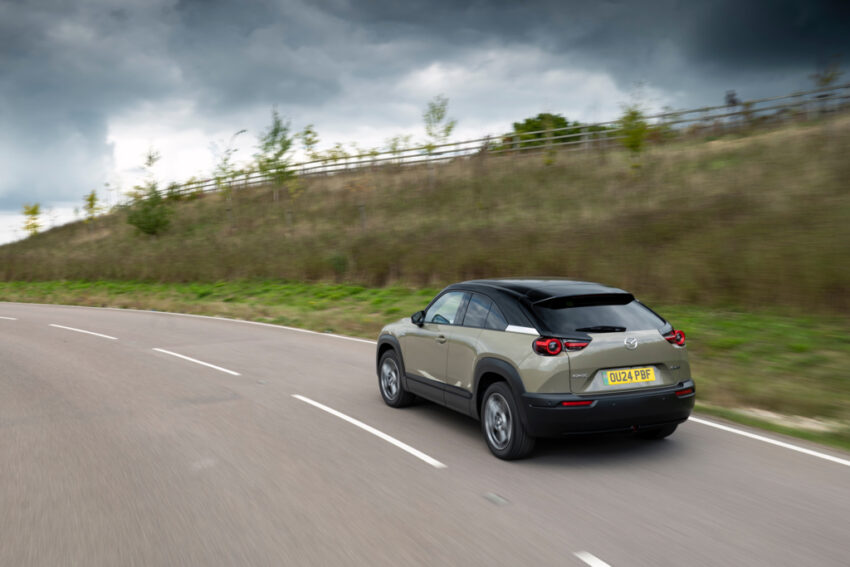
Mazda MX-30 Makato
- Price: £32,395 (£33,895 as tested)
- Powertrain: single-motor, front-wheel-drive
- Battery: 35.5kWh usable
- Power: 143bhp
- Torque: 200lb ft
- Top speed: 87mph
- 0-62mph: 9.7 seconds
- Range: 124 miles
- Consumption: 3.47m/kWh
- Charging: up to 50kW


